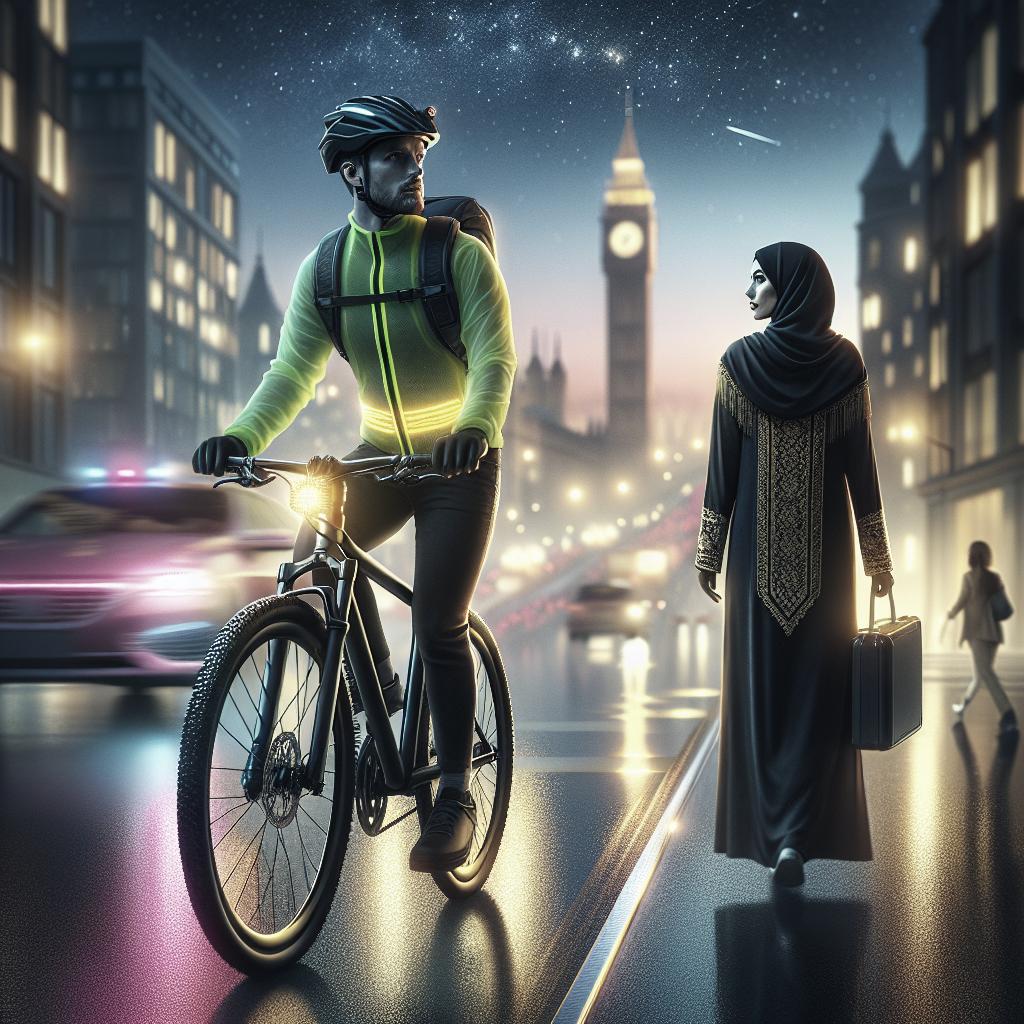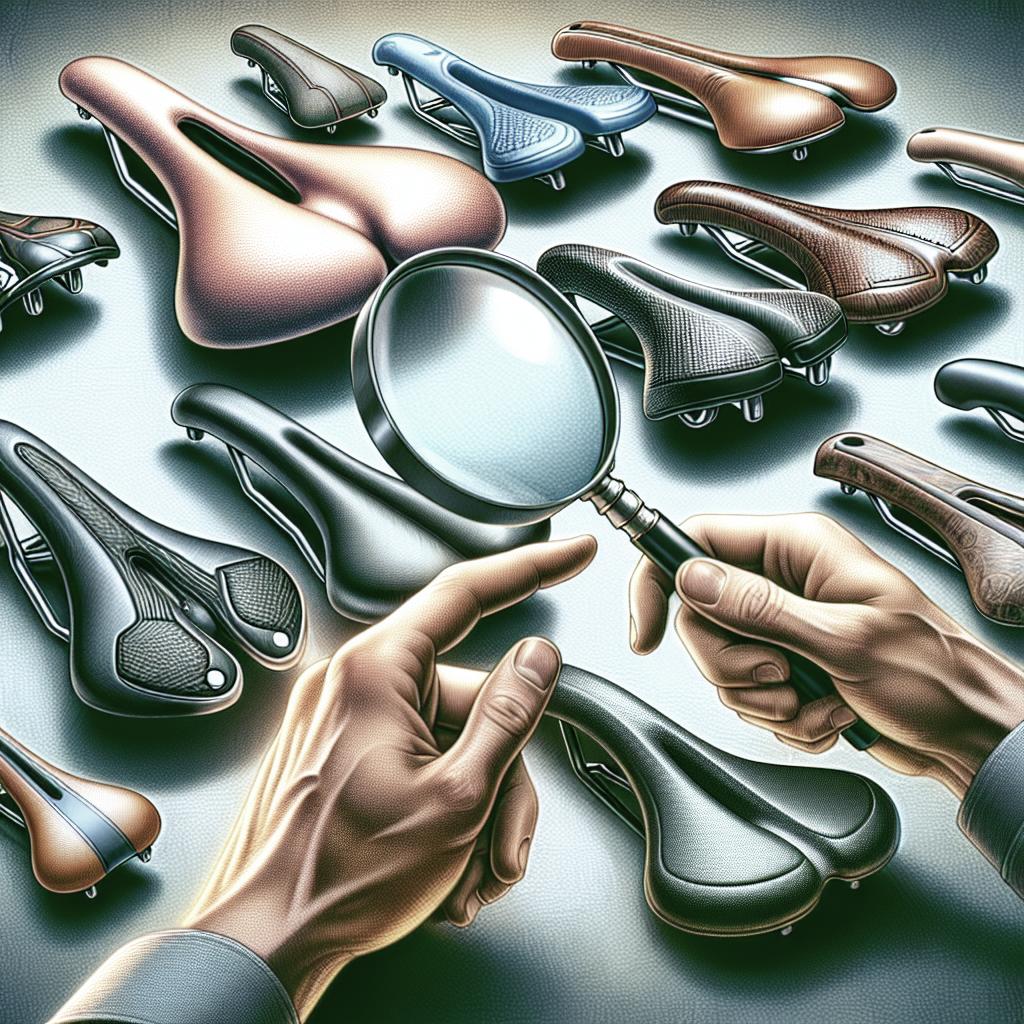“`html
How to Ensure Bike Safety at Night
Cycling at night can be a thrilling experience, offering a unique perspective on your surroundings, whether cycling through bustling city streets or the serene countryside. However, night riding demands increased attention to safety. With decreased visibility, cyclists need to be well-prepared to face potential hazards. This article explores essential equipment — from lights and reflective clothing to advanced technology like GPS and rearview radar — to ensure that you remain visible and safe. We will also delve into practical tips for riding in the dark safely. With these guidelines, you’ll be equipped to enjoy your nocturnal adventures with confidence.
What You Need to Cycle at Night
Front and Rear Lights
Front and rear lights are non-negotiable essentials for night cycling. Front lights illuminate the path ahead, helping you navigate obstacles and alert oncoming traffic to your presence. The brightness of your light, measured in lumens, should match your environment. Urban cyclists may only need around 200-500 lumens, while those on dark trails might require 800+ lumens.
Rear lights, often red, signal to others behind you. They should be bright enough to be visible from a distance but not blinding. Consider modes and settings that allow for flashing lights to capture attention without compromising power. Opt for lights that are USB rechargeable for convenience and reliability, ensuring you always have the necessary power when hitting the road.
Reflective Clothing
Reflective clothing enhances visibility by catching light from vehicle headlights, making you more noticeable in low-light conditions. This type of clothing is particularly effective in areas without street lighting. Look for vests, jackets, or bands made of lightweight, breathable material to maintain comfort during your ride.
If you prefer not to wear full reflective gear, consider accessories such as reflective tape or adhesive strips that can be placed on your clothing, helmet, or bike. These are versatile, inexpensive, and can significantly increase your visual footprint on the road.
Repair Kit
A repair kit is an indispensable companion for cyclists at any time, more so at night when help might be scarce. Your kit should include essentials like tire levers, a multi-tool, patch kits, and a portable bike pump. Night cycling increases the risk of encountering unseen hazards, making it crucial to have the tools on hand to address minor repairs independently.
Regular maintenance checks will minimize surprises, but a prepared cyclist is a safe cyclist. Make sure that your kit is compact, easy to carry, and well-organized to access tools quickly when needed.
Helmet
A helmet is an absolute must for safety at all times, providing critical protection in case of accidents. At night, consider using a helmet with built-in lights or a mount for attaching additional lighting. These features provide an elevated source of light that moves with your line of view, enhancing visibility.
Check the fit of your helmet regularly. It should sit level on your head, covering your forehead without obstructing your view, and be adjusted to stay fastened securely yet comfortably.
Spare Lights or Batteries
Spare lights or batteries act as backups, ensuring you’re never left in the dark due to depleted power sources. It’s essential to have an extra set of lights or at least replacement batteries for your primary lights, especially on long rides.
Invest in battery packs that indicate the charge level, so you’re aware of how much power remains. Rechargeable solutions are convenient, but disposable batteries can serve as a reliable last-resort option.
Rearview Radar
Rearview radar technology has quickly become an asset in the cycling world. It detects vehicles approaching from behind, alerting you with signals or sounds. This feature is especially advantageous at night, when hearing is impaired by background noise and visibility is compromised.
Consider integrating a rearview radar into your setup if you frequently cycle on roads with higher traffic. Combining this with a mirror can provide a comprehensive awareness of your surroundings without constantly looking over your shoulder.
GPS Cycling Computer
A GPS cycling computer is not only about tracking distance or speed; its navigational features are valuable for night rides. With pre-loaded maps and programmed routes, you can safely find your way in the dark without stopping to check a phone.
Advanced models offer features like incident detection and live tracking, notifying contacts in case of emergencies. This additional layer of security ensures that if something unexpected happens, help can be dispatched promptly.
12 Tips for Riding in the Dark Safely
1. Choose the Appropriate Light for Your Ride Environment
The choice of light should consider the riding environment. In urban settings, dimmer lights help avoid blinding oncoming traffic while providing enough illumination. Conversely, brighter lights are necessary in rural or off-road areas to spot hazards like wildlife or uneven terrain.
Ensure that your lights comply with local laws regarding brightness and beam focus to avoid legal issues while maximizing your safety profile.
2. Use Flashing Rear Lights
Flashing rear lights are more likely to catch the attention of motorists than steady lights. The irregular pattern naturally draws the eye, providing an extra measure of safety. Most modern bike lights offer various flashing modes; experiment with whichever is most effective in your travels.
Remember to position your rear light to avoid obstruction from bags or clothing, securing that it remains visible from multiple angles.
3. Use Reflectors on Your Bike
Many bikes come with factory-installed reflectors, but additional reflective elements can enhance visibility further. Consider placing reflective tape on wheel rims, pedal cranks, and frames, increasing your visibility to others on the road.
Reflective tire sidewalls are an excellent investment, offering extra visibility from the side angles where headlights might not fully reach you.
4. Choose a Familiar Route
Opting for familiar routes during night rides reduces the chances of unexpected surprises and helps decrease anxiety. You’re more likely to remember where potential hazards like potholes or sharp turns lie.
Familiarity also enhances your confidence, allowing you to focus more on monitoring your surroundings and less on navigating unknown paths.
5. Plan Your Route in Advance
If a new route is necessary, plan it thoroughly before heading out. Use online maps and apps to identify amenities along the way, like available street lighting and bicycle lanes.
Planning your ride provides peace of mind, knowing you have considered potential hazards and accustomed yourself to visual way markers and destinations.
6. Make Sure Your Bike is Well-Maintained
Night cycling can amplify even the smallest mechanical issues. Regular maintenance checks on brakes, tire pressure, and gear systems can prevent unexpected breakdowns.
Pay attention to creaky noises or an imprecise shifting system, rectifying them before setting off for your night excursions.
7. Don’t Ride in the Dark During Bad Weather
Avoid riding in adverse weather such as heavy rain, fog, or strong winds, especially at night when the risks increase dramatically. Reduced visibility and challenging riding conditions mean greater hazards.
If caught unexpectedly in bad weather, seek shelter or find a safe route back. Safety should always take precedence over the thrill of the ride.
8. Make Sure Your Light Batteries are Fully Charged
Keeping your lights fully charged is essential. Develop a habit of checking battery levels before every ride and carrying a power bank or spare batteries for emergencies.
Adopting a charging routine, like plugging your lights overnight, ensures they are always ready for your next outing.
9. Wear Reflectors on Parts in Motion
Reflectors on moving parts create a dynamic visibility signal to others, making it clearer that you’re traveling on a bicycle. Consider reflectors on pedals or shoes and wheels.
These dynamic reflectors amplify your presence on the road, catching the attention of other road users through movement.
10. Don’t Try New Tricks
Night rides are not the time for experimentation. Avoid attempting new tricks or maneuvers that you have not perfected during daylight, as errors can lead to accidents more easily in the dark.
Stick to your skill level and focus on riding predictably to ensure your safety and the safety of those around you.
11. Keep Others in the Know of Your Whereabouts
Informing someone about your route and expected arrival time is a simple measure that adds a layer of security. Should anything happen, someone will know your planned location.
Sharing your ride plan is also useful if you decide to switch routes, allowing someone to pinpoint your general direction or ride status promptly.
12. Don’t Leave Your Phone Behind
Your phone is not only a tool for communication in emergencies but also doubles as a map or flashlight if needed. Ensure you have it fully charged and easily accessible during your ride.
Consider investing in a waterproof case and a secure mounting system so your phone is usable and protected at all times.
Final Thoughts
Ensuring bike safety at night involves preparation, proper equipment, and prudent cycling practices. Here is a summarized overview of the key points for ensuring your safety while cycling in the dark:
| Equipment | Tips |
|---|---|
| Front and Rear Lights | 1. Choose the appropriate light for your ride environment |
| Reflective Clothing | 2. Use flashing rear lights |
| Repair Kit | 3. Use reflectors on your bike |
| Helmet | 4. Choose a familiar route |
| Spare Lights or Batteries | 5. Plan your route in advance |
| Rearview Radar | 6. Make sure your bike is well-maintained |
| GPS Cycling Computer | 7. Don’t ride in the dark during bad weather |
| 8. Make sure your light batteries are fully charged | |
| 9. Wear reflectors on parts in motion | |
| 10. Don’t try new tricks | |
| 11. Keep others in the know of your whereabouts | |
| 12. Don’t leave your phone behind. |
“`


